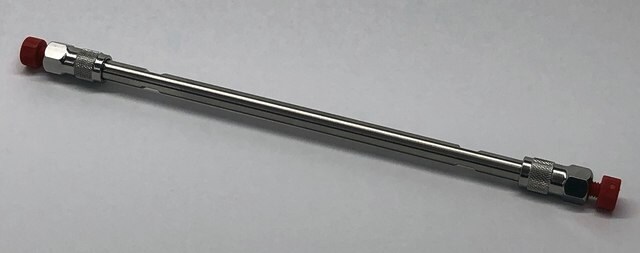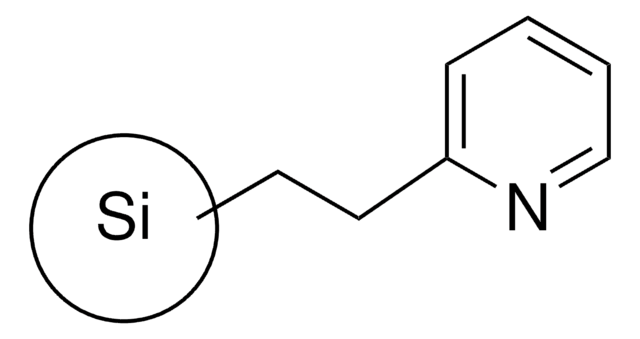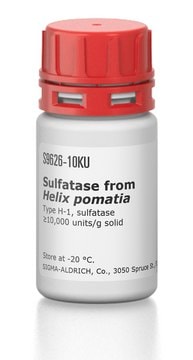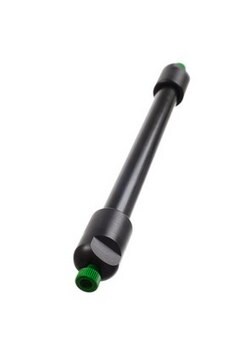54127-U
2-(2-Pyridyl)ethyl Silica Gel
bed wt 100 mg, volume 1 mL, pk of 108
About This Item
Produits recommandés
Composition
bed wt, 100 mg
Conditionnement
pk of 108
Technique(s)
solid phase extraction (SPE): suitable
Volume
1 mL
Groupe de la matrice active
WAX phase
Application(s)
food and beverages
Technique de séparation
ion exchange
Description générale
Sample Matrix Compatibility: Organic or aqueous Solutions
- Weak anion exchanger ideal for extracting strong basic compounds that remain charged at all pH levels
- Unlike conventional weak anion exchange SPE phases such as -NH2 (aminopropyl) that have a pKa of 9-10, a pH ≤ 7 is required to protonate or ionize the stationary phase to facilitate analyte retention. Elution is typically done by increasing the pH to 11 resulting in neutralization of the SPE phase.
- 2-(2-pyridyl)-ethyl silica gel has a pKa of ~6. Therefore, analyte elution is feasible at a pH ≥ 7. This characteristic is important for extracting analytes that are not stable (e.g. hydrolyzes) at high pHs typically required for elution when using traditional weak anion exchangers.
- Ideal for extracting acyl-coenzyme A esters from tissue.
- For more information, please see: Minkler, P.E., Kerner, J., Ingalls, S.T., Hoppel, C.L., Novel isolation procedure for short-, medium-, and long-chain acyl-coenzyme A esters from tissue, Analytical Biochemistry 376 (2008) 275–276
Mention d'avertissement
Warning
Mentions de danger
Conseils de prudence
Classification des risques
Eye Irrit. 2 - Skin Irrit. 2 - STOT SE 3
Organes cibles
Respiratory system
Code de la classe de stockage
11 - Combustible Solids
Classe de danger pour l'eau (WGK)
WGK 3
Point d'éclair (°F)
Not applicable
Point d'éclair (°C)
Not applicable
Faites votre choix parmi les versions les plus récentes :
Certificats d'analyse (COA)
It looks like we've run into a problem, but you can still download Certificates of Analysis from our Documents section.
Si vous avez besoin d'assistance, veuillez contacter Service Clients
Déjà en possession de ce produit ?
Retrouvez la documentation relative aux produits que vous avez récemment achetés dans la Bibliothèque de documents.
Articles
SPE retention mechanism in this case is based on the electrostatic attraction of charged functional groups of the analyte(s) to oppositely charged functional groups on the sorbent.
Protocoles
Retention occurs through polar interaction between the sorbent and analytes. Typical sample matrices that can be employed in normal-phase SPE include hydrocarbon or fatty oils diluted in a solvent like hexane, isooctane, chlorinated solvent, THF, diethyl ether, or ethyl acetate.
Notre équipe de scientifiques dispose d'une expérience dans tous les secteurs de la recherche, notamment en sciences de la vie, science des matériaux, synthèse chimique, chromatographie, analyse et dans de nombreux autres domaines..
Contacter notre Service technique









